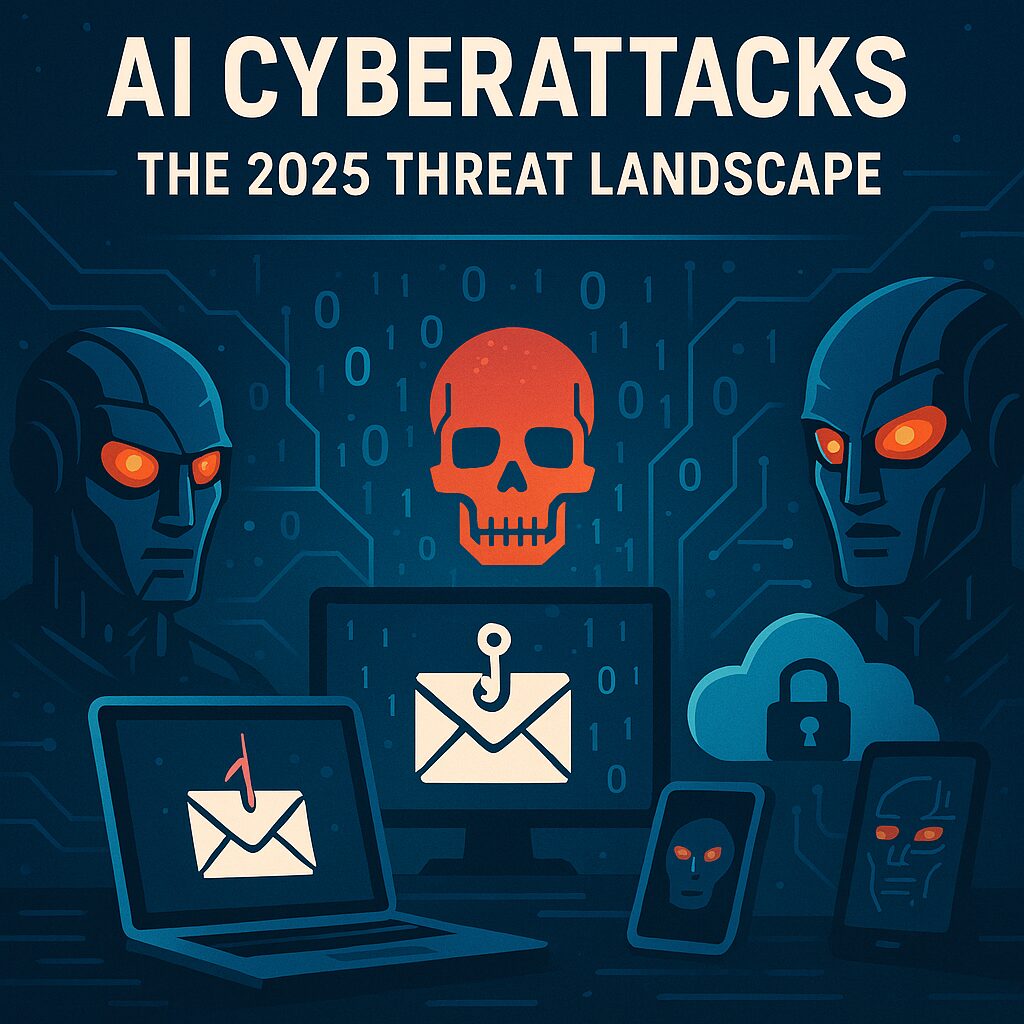Introduction: The Rise of Machine-Driven Threats
In 2025, cyberattacks have evolved beyond human orchestration. Artificial Intelligence (AI) is now both a weapon and a shield in the digital battlefield. From autonomous malware to synthetic identity fraud, AI-powered cyberattacks are reshaping the global threat landscape. This article explores the key trends, technologies, and vulnerabilities defining cybersecurity in 2025—and what organizations must do to survive.
🤖 Key Trends in AI-Driven Cyberattacks
1. Automated Reconnaissance at Scale
AI tools now scan the internet at speeds exceeding 36,000 scans per second. These automated systems map exposed services like SIP, RDP, and IoT protocols before patches can be applied—compressing the time between vulnerability discovery and exploitation.
2. Cybercrime-as-a-Service (CaaS)
Platforms like FraudGPT and BlackmailerV3 are democratizing cybercrime. These AI-driven tools generate phishing websites, deepfake videos, and synthetic voices, enabling even low-skilled actors to launch sophisticated attacks.
3. AI-Powered Malware
Malware now learns and adapts in real time. Using reinforcement learning, these threats evade detection, modify attack vectors, and exploit zero-day vulnerabilities with surgical precision.
4. Synthetic Identity & Deepfake Attacks
AI-generated personas and voice clones are fueling Business Email Compromise (BEC) and vishing campaigns. These attacks bypass traditional authentication and exploit human trust.
☁️ Vulnerabilities in the Cloud Era
As organizations migrate to cloud-native infrastructures, AI attackers are exploiting misconfigured APIs, unsecured containers, and weak identity management systems. The cloud battlefield is now a prime target for lateral movement and post-exploitation persistence.
🧠 Human-AI Hybrid Threats
Threat actors are combining AI automation with human ingenuity. For example:
- Initial Access Brokers (IABs) use AI to harvest credentials, then sell them on darknet marketplaces.
- Ransomware-as-a-Service (RaaS) groups deploy AI to optimize encryption algorithms and extortion tactics.
🔍 Strategic Recommendations for 2025
To defend against AI-powered threats, organizations must adopt an AI-native security posture:
- Deploy AI for Threat Detection: Use machine learning to identify anomalies and predict attack patterns.
- Zero Trust Architecture: Assume breach and verify every access request.
- Continuous Red Teaming: Simulate AI-driven attacks to test defenses.
- Cybersecurity Awareness Training: Educate employees on deepfakes, phishing, and synthetic voice scams.
📈 SEO Keywords to Target
- AI cyberattacks 2025
- artificial intelligence in cybersecurity
- deepfake phishing threats
- ransomware-as-a-service
- cloud security vulnerabilities
- automated malware detection
- synthetic identity fraud
🧭 Conclusion: Navigating the AI Threat Horizon
The acceleration of AI in cybercrime is not a distant future—it’s today’s reality. As adversaries industrialize their operations, defenders must evolve faster. Cybersecurity in 2025 demands not just tools, but a paradigm shift: from reactive defense to predictive resilience.

